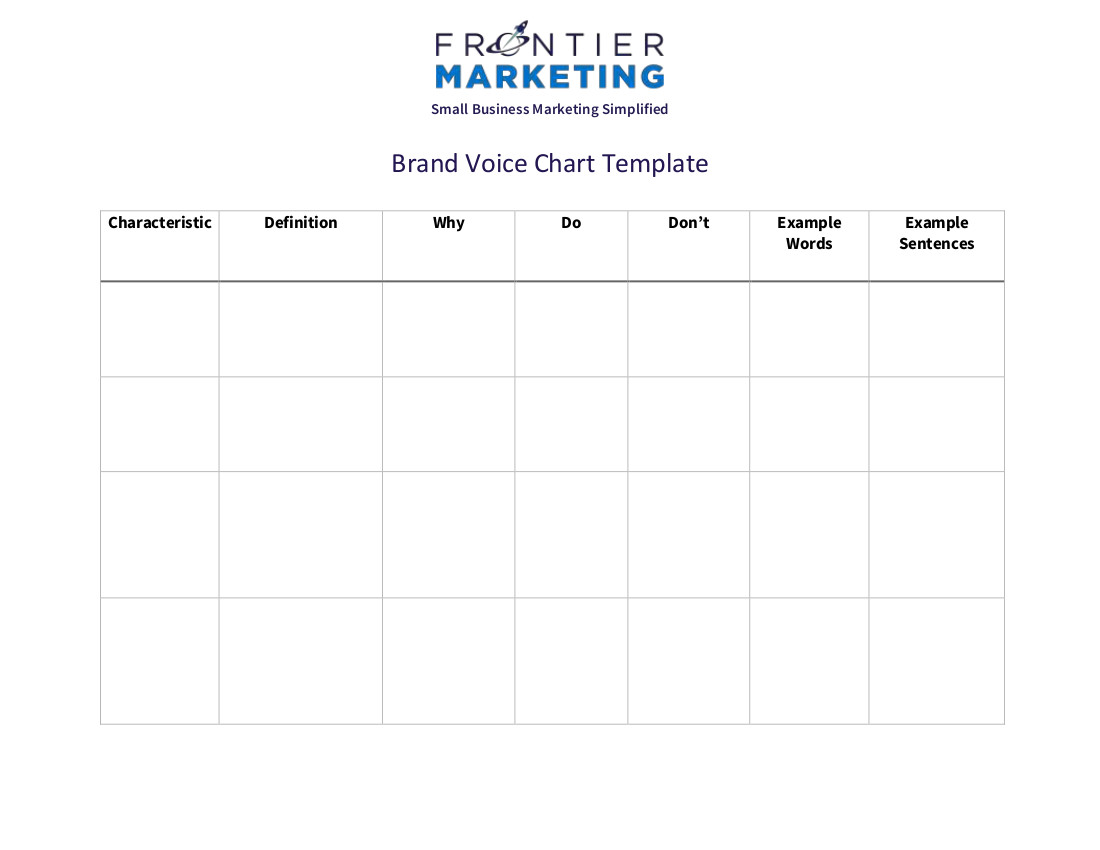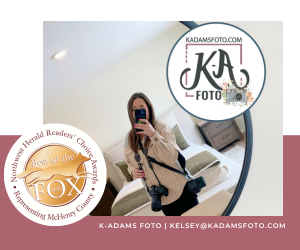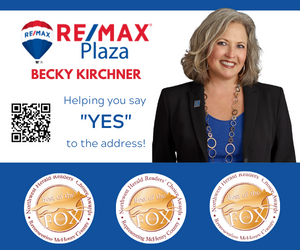Nikki O’Donnell
Nikki is the COO of Frontier Marketing
How to Create a Useful Brand Voice Guide for Your Business
Make Your Small Business Stand Out with a Unique, Captivating Brand Voice Guide!
We can learn a lot from Wendy’s.
It may just be a fast-food chain known for its square burgers and Frosties. But do you know what the company is also fantastic at?
Social media.
Wendy’s is known for sassy, sarcastic Tweets, comments, and messages. The company’s distinct brand voice makes them instantly recognizable online.
In the same way, your brand’s voice could separate your business from the pack.
But how do you develop your business’s voice? It’s not as hard as it might look. All it takes is a little bit of time and knowing your business.
Wendy’s didn’t become the sarcastic juggernaut overnight. But with the methods and strategies we have below, you can develop your own brand voice guide to stand out!

Why is Voice Important for a Brand?
Voice is important because it defines who you are for customers. When a customer sees a Tweet or a Facebook post, they immediately recognize your business. And they know that when they go into your store, it will be the same voice as well.
Other than just defining you, it can distinguish your company from your competitors.
Say you own an ice cream store. Chances are there are a bunch of different ice cream stores in your area. That means many different ice cream stores are trying to get a customer’s attention.
If you have a distinct voice, more people will recognize and see you for who you are. It brings you to the front of all that marketing noise.
This recognition, in turn, humanizes your brand as well.
Suddenly you’re not just a faceless ice cream shop. Instead, you have personality, charisma, and relatability. And customers love to shop at stores they relate to.
A solid, distinct voice creates a fully-formed, relatable business that customers want to shop at.
What’s the Difference Between Voice and Tone?
Before we go any further, we should define a few things for you.
Voice and tone are two terms that people often conflate. However, while they are related, they are not the same.
Here are the definitions of the two terms:
- Voice: Your brand’s voice is its personality, which can be described with adjectives. For example, your voice can be lively, positive, cynical, or professional.
- Tone: Your brand’s tone is a subset of your voice. It is how your voice comes off based on audience, situation, and channel.
So, while you may have one voice for your brand, you’ll have many tones. Once you have your voice down, you can start to see how it applies to different situations.

How Do You Begin Developing Your Brand’s Voice?
Recently at Frontier Marketing, we began diving into how to define our voice. While we’ve had a voice since we opened, we never wrote it down to make it easily accessible.
So, we decided to create a brand voice guide. What is a brand voice guide? It’s a guide or chart that defines what your business’s voice is and what it is not. Having a guide like this helps keep a consistent voice across all platforms!
We want to share with you how to create a brand voice guideline for your small business. First, there are a few things you should review!
1. Review Your Mission Statement and Vision Statement
This right here is your starting point. Do you have a mission and vision statement?
A vision statement is your ultimate goal. What do you want to accomplish as a small business?
A mission statement plots out how you will achieve that vision. It is the plan you set out in order to reach your vision.
This is the foundation of your small business. These mission and vision statements should guide your voice process because it’s who you are as a company.
2. Know Your Audience
After you know your business, look at your audience. In the case of small businesses, that will be the customers.
Do a careful review of who shops at your business. Here are a few things you want to look out for and write down:
- Demographics: Age, gender, marital status, occupation, etc.
- Psychographics: Attitudes, aspirations, buying habits, hobbies, etc.
- Linguistics: Common words, phrases, and dialects your customers use.
The goal of this is to make sure you know how your customers think. You want to know what they know and what they like.
A great way to dig deeper into what your customers or audience like is through Facebook.
On your Facebook page, look at who your top followers are. Those are the ones who like, comment, or share your content the most. You can click on their profiles and see their interests.
3. Know the Face of the Company
Once you have your business down and your customers and audience down, you can look at yourself.
Why?
As a small business owner, you’re the face of the company. It’s not like Wendy’s with millions of franchises. Instead, it’s your business.
That means customers interact with you, and they know who you are and what you sound like. Consistency in your brand identity guidelines is key. You don’t want to sound one way online and sound completely different in-person.
What you’ll want to do is list out adjectives that describe who you are and your brand. Are there overlaps? What we mean is, how much of you shines through your brand? Those will be the adjectives to help solidify your voice.
How Do You Create Your Brand Voice Chart?
Now that you have all of this information about your company, your customers, and yourself, it’s time to start putting it all together.
What you’re going to do is create a brand voice chart. This chart acts as your brand guidelines. It breaks down your small business’s entire voice into easily readable sections that can apply to different situations, channels, and content.
And, at the end of this, we’ll give you the template for your very own brand voice chart!
1. Characteristic
The first section of your voice chart will be labeled “Characteristic.” You will have roughly 4-7 of these.
Remember those adjectives we had you write down? These are your “characteristics.” Say you’re quieter or reserved. That’s a characteristic. You would be put down “quiet” or “reserved.”
Use the adjectives to fill in the rest of the characteristics. Like the mission statement, these are the foundation of your brand’s voice.
And, as a good reminder, these are not written in stone. You can experiment a little bit with your characteristics throughout the process and see which ones fit better.
2. Definition
Next to “Characteristics” is your “Definition” section. This section is where you’re going to plainly define the characteristic.
So, for example, Frontier Marketing has the characteristic of “Concise.” Our definition of “Concise” is “Provides simple solutions to customer problems and clear answers to customer questions.”
We’ve written it simply enough that anyone who looks at this chart understands what the characteristic is and what it means.
3. Why
Your next column will read “Why.” Think of it as the shortened version of, “Why does your company value this characteristic?”
For us, then, the question is, “Why is Frontier Marketing concise?” The answer we put down is, “We want to save our customers time. So, we keep it brief.”
And again, you want to make this accessible as possible. Anyone off the street should be able to look at your guide and know why you value a certain characteristic.
4. Do
The next section is simply titled “Do.” Here’s where you put down the “rules” of each characteristic.
What do you do for each characteristic? What’s a way that people understand your characteristic?
A simple exercise to really nail down what you do is to write sentences like:
We are X, so we do Y.
Looking at Frontier Marketing, our “Do” for concise is:
“We keep sentences short, solve problems, and are direct in our answers.”
5. Don’t
Likewise, the next column will be labeled “Don’t.” Because of your characteristic, what don’t you do?
Because Frontier Marketing is concise, we don’t use confusing jargon. Again, it’s about keeping it simple.
6. Example Words
As you’re writing across different platforms, you should keep your voice consistent. Whether it’s on social media, your website, or emails, consistency is key.
Sometimes, you can tell a brand based on what words they use. But what words do you use?
This section might take some experimenting. Look at your characteristic and write down some words that capture it. Do these words line up with your brand? Are they words that your audience uses?
For Frontier Marketing, we use words like “Basic,” “Easy,” “Effortless,” and “Painless” to describe our characteristic of concise. We make digital marketing simple. These words show that.
7. Example Sentences
Finally, you will want to jot down some example sentences. These are really where each of the characteristics shine through.
For example, under “Concise,” we would use sentences such as, “What does this mean for you?” and “This affects your business because…” It is direct, to the point, and shows how simple we make things.
These sentences should be used as a template, or a jumping off point. It’s easy to lean on them for all of your communication. However, this should be a building block for other sentences and phrases you want to use.
Here is the brand voice chart template that you can download and fill in for your small business!

What Happens After Your Brand Voice Guide is Done?
You’ve filled out your brand voice guide, and you think it’s ready to go. Great! So, what do you do next?
Well, this should be a collaborative effort between you and your team. Show it to your employees or partners and get feedback from them. These should be people who know the brand well.
Find out if they agree with your statements. Maybe you overlooked something that’s a key quality of your business. Or, maybe they have a different perspective on certain characteristics.
Once you’ve fine-tuned the brand voice guide, now it’s time to put it into action.
How Should You Follow Your Brand Voice Chart?
You should hand out the brand voice chart to anyone in the company who writes anything at all. That’s all of your web designers, social media managers, and communications coordinators.
Go through the chart with each of them and make sure you tell them how you went about building this. That way, they can see the thought process behind these choices.
Everyone should follow this guide. When in doubt on how to write something, consult the guide.
For Frontier, every time we write, we now ask, “Is it concise?” “Is it energetic?” We look at each of these characteristics and make sure it lines up with what we’re writing.
Let Your Small Business’s Voice Shine
Now that you know how to create a voice for your small business, it’s time to put it into practice! We hope this guide answered your questions and gave you a good platform to go forward.






















